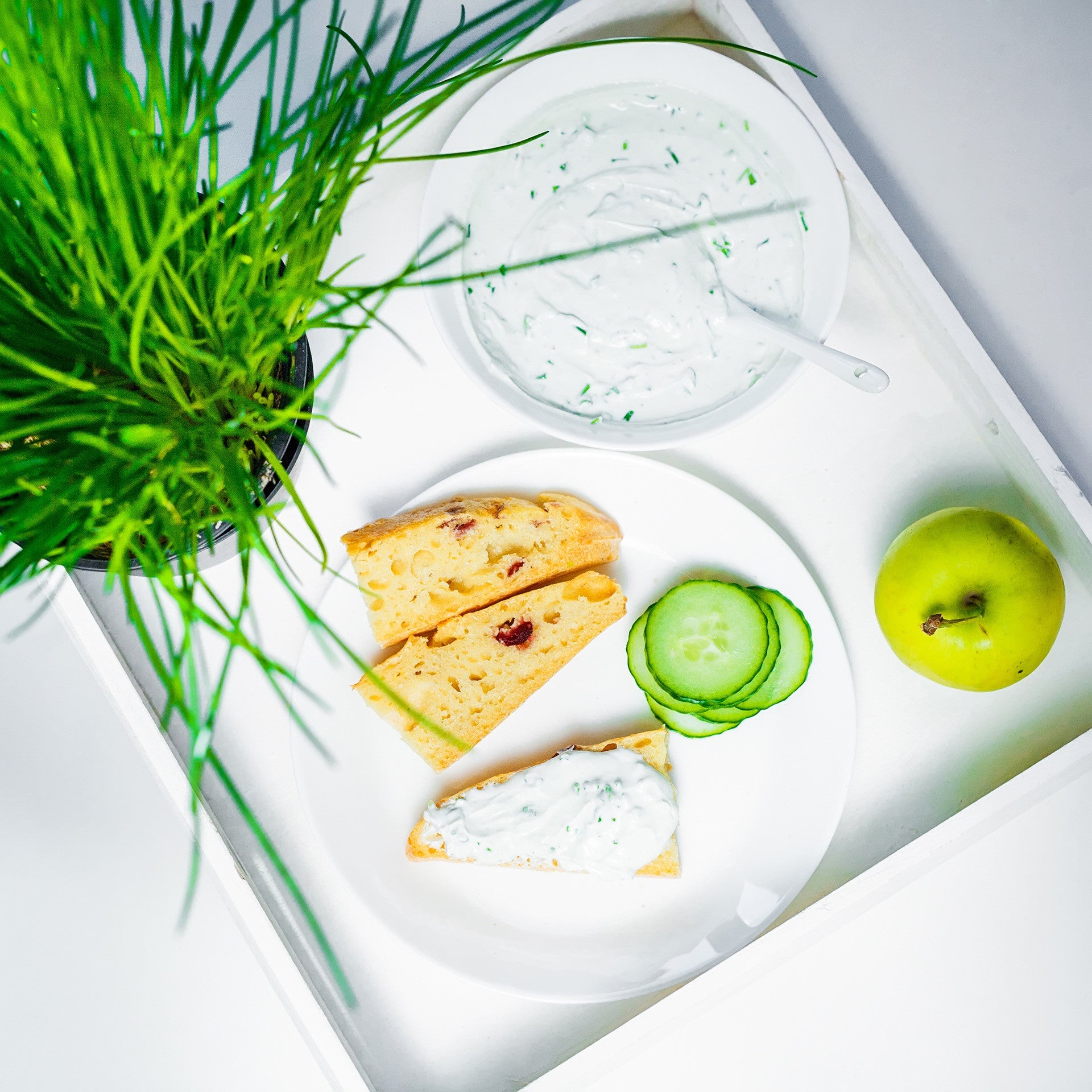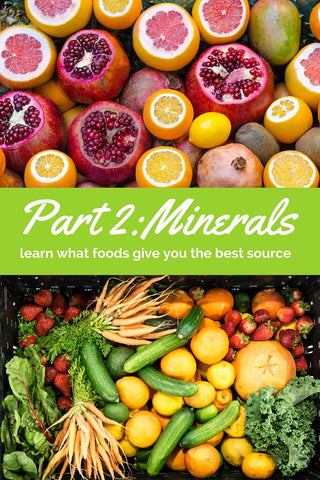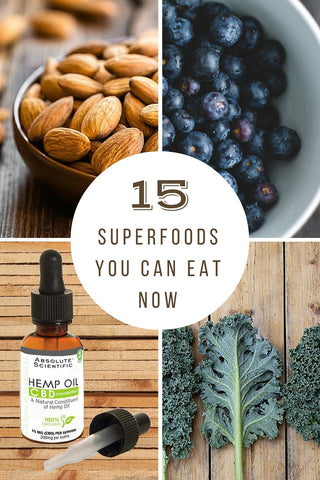Living Well — fruit

The Truth About Your Healthy Snacks 0

We’ve all tried to swap out a bag of chips for some whole grain pretzels or a granola bar in an attempt to eat better and be more healthy. However, what we’re perceiving as the better option may be just as bad as our original guilty pleasure or indulgence. As people study food more, it has come to light that many things we thought were good for our health and our waistlines might not be as beneficial as we thought. Let’s take a look at some popular “healthy” snacks and see what the truth is.
Granola Bars: These can be great if you avoid the ones loaded with sugars. However, many granola bars are super sugary and sacrifice health for taste. Granola isn’t good for you if it’s been over processed and covered in multiple layers of corn syrup and sugar. The challenging part about finding truly healthy granola bars is most people don’t like the taste of a dry, unsugared granola bar (go figure!) Because of this many granola bars contain chocolate, caramel, and other ingredients that you wouldn’t eat alone and think they’re healthy. So why does having them loaded in your healthy snack make it any better? Look for options that don’t contain added sweet ingredients, and stick to natural flavors.
100 Calorie Packs: People think these are “healthy” alternatives, but they’re actually only marketed this way because there is a limited number of calories in them. Calorie count aside, these are usually snacks high in processed fats and carbs. Instead of the entire bag of chips, you’re just getting a small portion of the same unhealthy products. You’re hard pressed to find an element of these little packs that can be construed as healthy. Furthermore, many people think that since there’s only 100 calories in one pack and it isn’t bad for you, they can eat multiple, leading to the consumption of calories that are equivalent to the full-sized snack.
Pretzels: For some reason, we have the perception that pretzels are a healthy alternative to snacks like chips or cookies. But when it comes down to it, pretzels are basically just flour and salt, and all carbs, which are all a huge no-no. They’re also nutritionally empty. If you’re going to fuel your body, try choosing something a bit more nutritional. Pretzels will do absolutely nothing for your body. They also have a ton of sodium stemming from all that salt on top - with one serving size containing about 25% of your recommended daily consumption.
Veggie Chips: Just because you see the word veggie on these packages doesn’t make them as healthy as a vegetable. These products are often misleading, with the only veggie in sight being vegetable powder that fools you into thinking your veggie chips have the nutritional value of the vegetable they share a color with. The nutrients from vegetables are not in your veggie chips, despite the artificial flavoring that might give you that impression. If there actually are veggies in your chips, their presence is so minuscule due to over processing that any nutritional value that could possibly come from them is gone. Veggie chips are also made of mostly potato starch and corn flour. So unless potato starch is your idea of a nutritional vegetable, steer clear of veggie chips.
Dried Fruit: Many are fooled into thinking since fruit is good for me, dried fruit must be too. The truth is, many dried fruit products contain a ton of additives like sulfur to extend their shelf life. Do you really want to be consuming sulfur when you’re trying to be healthy? Additionally, many dried fruit is thoroughly sweetened with a ton of sugar to balance out the taste, totally canceling out any health benefits. Unsweeted and unsulfured products are available at certain health food stores, but you might as well save yourself the hassle and just stick to fresh fruit instead.
- Shannon Kaszuba
- Tags: food fruit health healthy living vegetables weight loss wellness
Part 2: Minerals - Learn What Foods Give You the Best Source 0
 In part 1, we discussed the different vitamins and how to incorporate them into your diet by choosing the best food sources. This time around, we’re looking at the minerals out there and how you can maximize your intake by following our list of foods for each category. Did you miss Part 1: Vitamins? You can check it out right here. Again, just like last time, in order to provide you with the ultimate best food choices, to make our list the food sources had to provide at least 50% of the dietary reference intake (per the USDA) in one serving. Take a look at part 2!
In part 1, we discussed the different vitamins and how to incorporate them into your diet by choosing the best food sources. This time around, we’re looking at the minerals out there and how you can maximize your intake by following our list of foods for each category. Did you miss Part 1: Vitamins? You can check it out right here. Again, just like last time, in order to provide you with the ultimate best food choices, to make our list the food sources had to provide at least 50% of the dietary reference intake (per the USDA) in one serving. Take a look at part 2!
Minerals
Calcium
Why you need it—it makes our bones strong! 99% of our body’s calcium content can be found in our bones and teeth. What may not be so well-known is that it also aids in our blood’s pH balance and muscle and nerve function. Where you can get it—yup, you guessed it, milk! But this is where it gets a little tricky, since some milk, and enough of it, can provide you with your daily needs of calcium, but also note that you can get your calcium from types of tofu as well!
Copper
Why you need it—it works together with iron to form red blood cells, so consuming foods high in copper can help with anemia. Although many people do not get enough copper in their diet, it is rare to be truly deficient. Where you can get it—seafood, such as oysters, red meat, sunflower and sesame seeds, tempeh, garbanzo and soybeans, cashews, shiitake mushrooms, lentils, and walnuts.
Fluorine
Why you need it—protect your teeth from decay. Where you can get it—fluorinated water as well as tea leaves.
Iodine
Why you need it—it is essential for the production of thyroid hormones in producing energy, with the thyroid gland containing about 70-80% of your body’s iodine at any given time. Where you can get it—sea vegetables (seaweed), scallops, cod, iodized salt, and yogurt.
Iron
Why you need it—it is responsible for carrying oxygen-rich blood to your cells and has a role in producing the body’s energy source (ATP). Where you can get it—red meat, poultry, fish, shellfish, soybeans, and fortified breakfast cereals.
Magnesium
Why you need it—it’s important for proper organ function, especially the heart, muscles and kidneys, and in addition helps activate enzymes and regulate levels of other minerals throughout the body. Where you can get it—pumpkin seeds, spinach, Swiss chard.
Phosphorus
Why you need it—about 80% of your body’s phosphorus content lies in the bones and teeth, so it too plays a strong role alongside calcium, and in addition helps filter out waste in the kidneys. Where you can get it—a good rule of thumb is looking for protein-rich foods, so try scallops, sardines, soybeans, pumpkin seeds, cod, tuna, salmon, lentils, and shrimp.
Potassium
Why you need it—we need this mineral for proper digestive and muscle functioning, and in addition low levels of potassium have been linked to high blood pressure. Where you can get it—yes, we all know bananas have potassium, but there are some other food sources richer in potassium that might surprise you. While there isn’t one food source that will give you all your daily potassium needs in a single serving, you can still get a good amount from beet greens, lima beans, Swiss chard, potatoes and sweet potato, spinach, and avocado.
Selenium
Why you need it—it works along with vitamin E to prevent the damage of free radicals in the body, in addition to playing a role in thyroid and immune system functioning. Where you can get it—look for meat and fish here, especially tuna, shrimp, sardines, salmon, turkey, cod, chicken, and lamb. But wait, if you’re looking for an alternative, Brazil nuts provide over 700% of your daily value!
Sodium
Why you need it—it works alongside potassium to regulate the body’s fluid balance in addition to aiding in nerve and muscle function. Where you can get it—table salt, seafood, and cheese.
Zinc
Why you need it—it plays a large role in immune system functioning and also supports normal growth and development. Where you can get it—red meats and some cheeses are a good source, although by far oysters are the richest source of zinc.
Part 1: Vitamins - Learn What Foods Give You the Best Source 0
 It’s common to hear that you should eat oranges if you need more vitamin C in your diet or have a banana if you want to get some potassium. What you may not realize is that there are other food sources with a much higher vitamin or mineral content you may be missing out on. Here we take a look at the top foods you should be eating to get the most bang for your buck to incorporate those essential vitamins and minerals into your daily diet. We’ve broken it down into two parts: vitamins and minerals. Let’s start with vitamins and be on the lookout for more on minerals later! In order to provide you with the ultimate best food choices, to make our list the food sources had to provide at least 50% of the dietary reference intake (per the USDA) in one serving. Take a look!
It’s common to hear that you should eat oranges if you need more vitamin C in your diet or have a banana if you want to get some potassium. What you may not realize is that there are other food sources with a much higher vitamin or mineral content you may be missing out on. Here we take a look at the top foods you should be eating to get the most bang for your buck to incorporate those essential vitamins and minerals into your daily diet. We’ve broken it down into two parts: vitamins and minerals. Let’s start with vitamins and be on the lookout for more on minerals later! In order to provide you with the ultimate best food choices, to make our list the food sources had to provide at least 50% of the dietary reference intake (per the USDA) in one serving. Take a look!
Vitamins
Vitamin B1
Why you need it—in general the vitamin B family helps in converting carbs into energy as well as metabolizing fats and protein. B1, or Thiamine, can help ensure proper heart and nervous system function in addition to muscle coordination. Where you can get it—fortified for thiamine breakfast cereals, white rice.
Vitamin B2
Why you need it—also known as Riboflavin, it promotes growth—think healthy skin, hair and nails! Where you can get it—beef liver, fortified for riboflavin breakfast cereals, oats.
Vitamin B3
Why you need it—Niacin aids the body in producing sex and stress-related hormones, improves circulation, and can suppress inflammation. Where you can get it—tuna, chicken, turkey, salmon, lamb.
Vitamin B5
Why you need it—known as pantothenic acid, it helps in the production of red blood cells as well as maintaining a healthy digestive tract. Where you can get it—shiitake mushrooms (psst…if you don’t like mushrooms, you can get a pretty good helping of B5 in avocados and sweet potatoes too!).
Vitamin B6
Why you need it—also known as pyridoxine, it plays a role in cognitive development, immune function, and hemoglobin formation. Where you can get it—chickpeas and tuna.
Vitamin B12
Why you need it—cobalamin can be difficult for some people to maintain in their diet particularly if they do not regularly consume meat or fish, but it is essential in promoting nervous system health, cardiovascular support, and DNA production. Where you can get it—sardines, salmon, tuna, cod, lamb, scallops, shrimp, beef, clams (if these are not a part of your diet, look to other sources like yogurt or fortified breakfast cereals).
Folate
Why you need it—folic acid, or vitamin B9 helps in proper brain function and mental as well as emotional health. Where you can get it—beans, beans, and more beans! As well as lentils, asparagus, and spinach.
Vitamin A
Why you need it—retinol is majorly known to help vision, in addition to healthy development of an embryo and fetus. Where you can get it—sweet potatoes, carrots, spinach, kale, Swiss chard, collard/beet/turnip greens, beef liver, cantaloupe, and pumpkin.
Vitamin C
Why you need it—absorbic acid is important for the growth and repair of bodily tissues, as well as bones and teeth, as well as promoting iron absorption. Where you can get it—yes, oranges still provide almost 100% DRI, but you can get even more vitamin C from papayas, bell peppers, broccoli, Brussel sprouts, strawberries, and even pineapple!
Vitamin D
Why you need it—aids in the absorption of calcium and phosphorus (we’ll get to those later). Where you can get it—sunshine! (Okay, that may not be something you can eat, but we still love it), as well as salmon and swordfish. Not a fan? Try fortified vitamin D orange juice or milk.
Vitamin E
Why you need it—it is most known for protection in free radical damage in addition to promoting cardiovascular health. Where you can get it—sunflower seeds, almonds, and wheat germ oil.
Vitamin H
Why you need it—biotin is especially good for promoting cell growth and as a result is often seen in beauty products for hair, nails and skin. Where you can get it—eggs, brewer’s yeast, peanuts, and almonds.
Vitamin K
Why you need it—we call it vitamin K for a reason, as the K comes from the German word koagulation for blood clotting. That is because vitamin K is most known for helping our blood to clot (yes, blood clots can be good sometimes—they are necessary to stop the bleeding when our skin gets punctured!). Where you can get it—think greens! That’s probably the easiest way to remember how to get your vitamin K, so fill up on kale, spinach, mustard/collard/beet/turnip greens, Swiss chard, parsley, broccoli, and Brussel sprouts.
15 Superfoods You Can Eat Now 0

The term superfood implies it may have superior value to other foods, particularly fruits and vegetables. So when we think of the kinds of benefits we want from this exclusive category of foods, typically we expect it to have an impressively high amount of nutrients—vitamins, minerals, fiber, antioxidants, and phytonutrients. Simply put, it helps give us that extra boost towards good health and well-being. No one knows your body better than you, so by now you might have a pretty good idea of what foods keep you lagging and tired, and we all know how energizing and rewarding it can be after eating healthy, natural, and nutrient-rich foods. Potentially the greatest advantage in eating superfoods regularly is that it’s a super-easy way to live a healthy lifestyle by consuming natural foods. The great news is you’re probably already eating some of these now! Take a look at our list of favorite superfoods and see if you can’t incorporate them into your daily diet!
Almonds contain soluble fiber, are high in monounsaturated fat while low in saturated fat, contain magnesium, and have no cholesterol—try a handful of almonds a day
Apples have no cholesterol, they do have soluble fiber, and can help keep you slim and clean your teeth while you’re at it! Like they say, an apple a day keeps the doctor away
Avocados…where do we start?! They contain 10-25% of your recommended daily intake of Vitamin K, Folate, Vitamin C, Potassium, Vitamin B5, Vitamin B6, and Vitamin E. This is a food that’s high in healthy fat—you only need to eat about 1/5 of an avocado to get a full serving
Beets have betaines! Never heard of it? They help stimulate functions of the liver—in addition they have no cholesterol and are high in both Vitamin C and fiber
Blueberries—can you say antioxidants? A single cup gives you 10 times the USDA’s recommendation! Additionally, being part of the berry family means they have a relatively low GI—that’s glycemic index, which helps keep your blood sugar level from spiking
Broccoli will take care of your daily recommended intake for Vitamin K and Vitamin C—and then some! Coming in at 245% and 135% of the DRI respectively, try having a cup of cooked broccoli. Steaming it? Even better!
Chia Seeds. The good? High in Calcium and Phosphorus. The great? Even higher in Fiber and Manganese. Try adding two tablespoons into a fresh fruit smoothie
Eggs are high in cholesterol, but now that we know saturated fat has a much higher impact on blood cholesterol, go ahead and have a preferably hardboiled egg and get a quick 7g of protein!
Flax Seeds are another great addition to a smoothie or even oatmeal. A lot of good is packed into two tablespoons—omega-3, fiber, protein, Vitamin B1, Manganese, Magnesium, and the list goes on!
Garlic contains both antibacterial and antiviral properties—several different compounds help your body’s circulatory, digestive, and immunological systems. They make excellent seasonings to plenty of dishes, so it shouldn’t be too hard to get at least half a clove of garlic on your plate!
Hemp Oil CBD is a natural anti-inflammatory and antioxidant, not to mention can help relieve that annoying nauseous feeling—try having about 25mg twice daily
Kale stands for K—Vitamin K that is, since one cup of these cooked greens comes in at a whopping 1180% of the daily recommended intake! Eat some as the main part of a salad or hide it in a fruit smoothie
Salmon is considered an oily fish, which is why it’s so high in omega-3 fats, not to mention being high in protein, so cook up 2 to 3 ounces of salmon—the next two foods make great side dishes!
Sweet Potatoes have got you covered with over twice the amount of Vitamin A you need for the day, on top of fulfilling half of your Vitamin C and Manganese requirements. And there’s more! This yummy food is also high in Copper, Pantothenic Acid, Vitamin B6, Biotin, Potassium, Fiber, Vitamin B3, B1, B2, and Phosphorus. Phew!
Tomatoes—let’s talk more antioxidants, specifically lycopene, which has been linked to bone health. Slice half a tomato to put over a salad, or get cherry tomatoes for a quick snack!
- Kate Hurd
- Tags: Absolute Health food fruit goals health healthy living hemp hemp oil natural organic superfoods vegetables wellness

 In part 1, we discussed the different vitamins and how to incorporate them into your diet by choosing the best food sources. This time around, we’re looking at the minerals out there and how you can maximize your intake by following our list of foods for each category. Did you miss Part 1: Vitamins? You can check it out right
In part 1, we discussed the different vitamins and how to incorporate them into your diet by choosing the best food sources. This time around, we’re looking at the minerals out there and how you can maximize your intake by following our list of foods for each category. Did you miss Part 1: Vitamins? You can check it out right  It’s common to hear that you should eat oranges if you need more vitamin C in your diet or have a banana if you want to get some potassium. What you may not realize is that there are other food sources with a much higher vitamin or mineral content you may be missing out on. Here we take a look at the top foods you should be eating to get the most bang for your buck to incorporate those essential vitamins and minerals into your daily diet. We’ve broken it down into two parts: vitamins and minerals. Let’s start with vitamins and be on the lookout for more on minerals later! In order to provide you with the ultimate best food choices, to make our list the food sources had to provide at least 50% of the dietary reference intake (per the USDA) in one serving. Take a look!
It’s common to hear that you should eat oranges if you need more vitamin C in your diet or have a banana if you want to get some potassium. What you may not realize is that there are other food sources with a much higher vitamin or mineral content you may be missing out on. Here we take a look at the top foods you should be eating to get the most bang for your buck to incorporate those essential vitamins and minerals into your daily diet. We’ve broken it down into two parts: vitamins and minerals. Let’s start with vitamins and be on the lookout for more on minerals later! In order to provide you with the ultimate best food choices, to make our list the food sources had to provide at least 50% of the dietary reference intake (per the USDA) in one serving. Take a look!